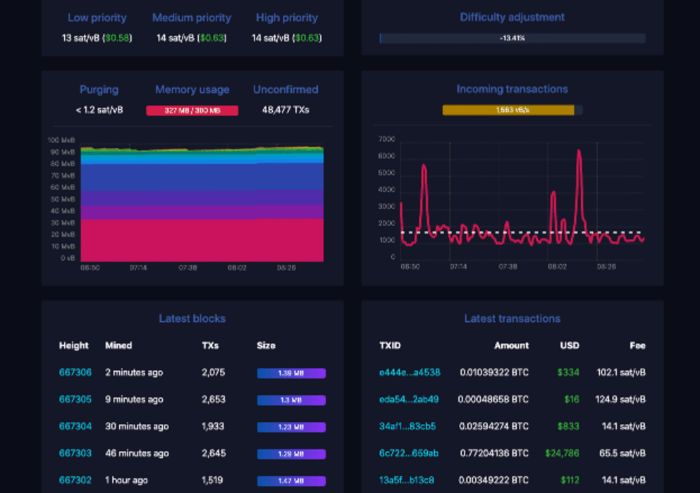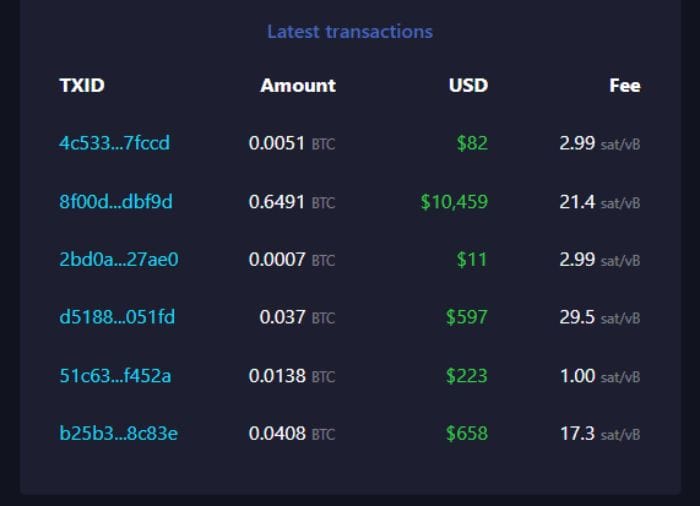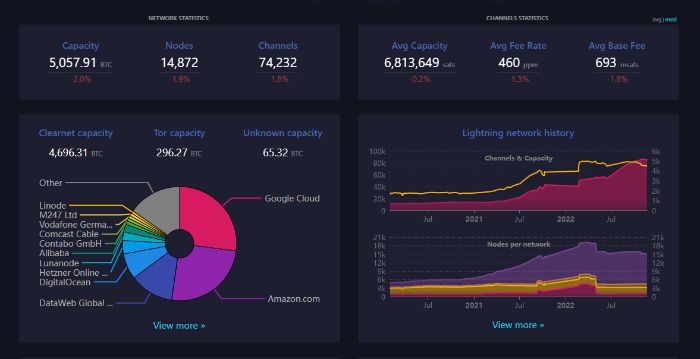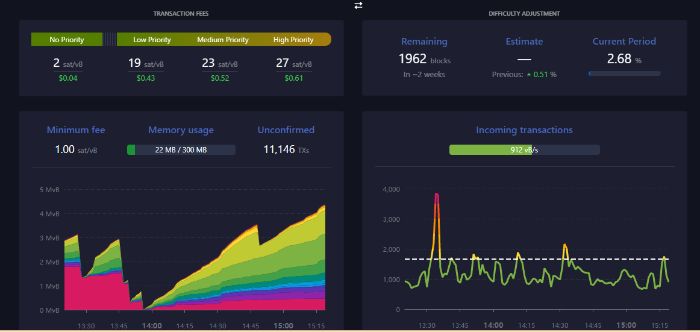The article is about how to use mempool space. The Bitcoin Network does not immediately add the transactions sent there to the blockchain. Before accepting a block of legitimate transactions, they must wait in a designated location.
To use mempool space, concentrate on the blocks labeled “unconfirmed” and “confirmed” at the top of the page. There is a line of unconfirmed blocks on the left. The validation block is the one closest to the line.
The mempool refers to this waiting area. Large mempool sizes indicate significant network traffic, leading to longer transaction confirmation times and higher transaction costs. To know more about bitcoin mempool use, keep reading.
Table of Contents
Bitcoin Mempool: What is it?
The cost of a Bitcoin transaction express as the number of satoshis paid for each transactional byte. The smallest unit of the bitcoin network’s native currency is a satoshi, and one bitcoin equals 100,000,000 satoshis.
The miners pick up the transactions in the mempool space with the highest transaction fees.
- But a few aspects of Bitcoin transactions have altered following the SegWit upgrade. Introduce a trading platform and a new transaction to boost the number of transactions per Bitcoin block.
- It resolved two problems. It fixed the transaction malleability issue and enhanced the number of Bitcoin transactions per second.
- All accessible Bitcoin nodes, before being sent to the network (i.e., computers participating in the Bitcoin network), must first confirm a Bitcoin transaction.
- It resides in the “Mempool,” which is the node’s “Unconfirmed Transactions” section, after successfully passing verification by a node (short for Memory Pool). The miner picks up the transaction and adds it to the following block.
- The node’s Mempool stores All pending transactions.
Unconfirmed transaction storage space varies between nodes. Each node has its copy of the pending transactions as a result. This explains why different sources have different mempool space sizes and transaction counts.
How to access the Bitcoin Mempool
To retrieve mempool data, we will use Bitcoin RPC methods, specifically the get raw mempool method. The following by copy-pasting into a terminal or cmd:
Replace the QUICKNODE BITCOIN URL with the HTTPS URL of your Bitcoin node, which we obtained in the previous step. A URL request to our node and the get raw mempool space method are shown.
Let’s now examine the output body. A list of the pending transactions currently in the mempool space is provided. We’ll execute one transaction and go over every field.
- A transaction on the blockchain is identifiable by its transaction id.
2. Transaction charge breakdown.
3. Size of the transaction according to BIP 141.
4. Bitcoin format and transaction fee (bitcoin).
5. Transaction fees with fee details determine mining priority.
6. The time in seconds since 1/1/70 GMT at which the transaction entered the pool.
7. The height of the blockchain at the time a transaction joined the pool (latest block).
8. The total number of subsequent transactions, including this one, in the mempool.
9. The total transaction volume in the mempool for all descendants.
10. In the mempool, descendant transaction costs undergo some changes.
11. The overall number of transactions in the mempool, including this one’s ancestors.
12. Size of all ancestor transactions in mempool.
13. All ancestor transactions in the mempool space had their fees modified.
14. The transaction id and witness information
15. It is where you would enter an unconfirmed transaction if it were to be used as input for this transaction.
16. This field must fill in if another unconfirmed transaction uses information from this transaction.
17. BIP 125 can replace the transaction, depending on the Boolean value.
18. Replace the QUICKNODE BITCOIN URL with the HTTPS URL of your Bitcoin node, which we obtained as the last step.
Mempool Administration
You might wonder how nodes avoid collapsing because there are too many pending transactions in the Mempool.
There is an easy solution. Once the mempool capacity is entirely occupied, the nodes start prioritizing transactions by setting a low transaction fee threshold. Only new transactions with a huge enough fee permit access to the Mempool, and transactions with a fee rate below the threshold are instantly removed from the Mempool.
The Value of the Memory Pool
In BIP 35, The Mempool is included(Bitcoin Improvement Proposal No.35). The concept was that outside nodes would have access to the Mempool of other nodes. This helps in the following situations:
- Those who want to download the most recent “transaction waiting list” to begin validating transactions or search for lucrative fees.
- The “waiting room” to mine the Bitcoin network is the Mempool. Users will have a better experience as blocks on the Blockchain add and clearance of transactions faster.
- In other words, a “traffic jam” will develop if new transactions come in more frequently than they clear from the mempool into blocks, and transactions may take a very long time for approval.
- A node deletes all of the transactions included in a block from its mempool when it receives the most recent mined block from the miner. The mempool space size immediately decreases as a result of this.
Most transactions will need to wait for at least one or two blocks for confirmation, for instance, if the Mempool size is about 3MB. Because each block is 1MB, clearing the whole mempool may need up to three confirmations (assuming no new transactions are coming in).
Remember that some Mempool transactions confirm, such as “dust transactions,” are low-priority transactions whose sender knows they will take a long time.
FAQ
What do a block explorer and a mempool do?
You may look through each Bitcoin transaction using a block explorer (blockchain explorer). To view address history, transaction status, etc., it is helpful. Unconfirmed transactions are kept in 'waiting room' by a mempool, also known as a memory pool, inside a Bitcoin node.
What transpires when mempool is entirely utilized?
There is an easy solution. The nodes begin prioritizing transactions once the mempool space is fully utilized by establishing a low transaction fee threshold. Only new transactions with a large enough fee permit access to the Mempool and transactions with a fee rate below the threshold are instantly removed from the Mempool.
How do Defi protocols use mempool data?
Mempool data use by DeFi protocols to compare their transaction processing times to those of other popular protocols. The truth is that many protocols need more information about transaction times (either the average or when things start breaking). Performance is important here.
Conclusion
We learned about Bitcoin mempool space today, its uses, how to access it, how to obtain pending transaction data, and how to obtain it.
Transactions are active in the mempool at any time. Internal transactions might range from two to five times that of external transactions. Data enters and exits the mempool continuously. A block also contains the top of the mempool.
As a result, the environment for mempool data becomes chaotic, just like the current cryptocurrency world.








